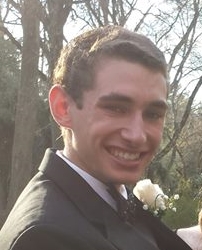By Peter Dissinger, Guest Blogger – Senior, Friends Central School, Wynnewood, PA
It’s no stretch to say that distracted driving is an epidemic in today’s world. Every month, it seems as if I am hearing about another car crash that was caused by a driver’s lack of attention to the road. Whether it is texting, fiddling with the radio, calling a friend, or even managing the GPS, there are so many easy ways for any driver to become distracted in an instant. This is especially true for teens, including myself. Maybe it’s a notification from our incredibly useful smart phones or even an inclination to be reckless, but research shows that teenagers are especially at risk for these types of behaviors.
For the past three years, I have worked with a youth group sponsored by the Coalition of Lower Merion and Narberth called the Youth Advisory Council, which is led by two professional advisers and contains students from private and public schools on the Main Line of Philadelphia. Our group’s goal is to educate parents in our area about the issues facing teenagers today.
As a senior this year, I helped spearhead a campaign against distracted driving because I believe that it is the new epidemic facing teens today. Distracted driving, not only among teens but also with adults is costing thousands of lives annually. We felt that as a group of students, we had a powerful message to share with our peers – one second without your eyes on the road can ruin your life forever.

One of our major goal’s this year was to produce a YouTube video, created, written and produced by students from the Youth Advisory Council. We worked with End Distracted Driving and Joel Feldman throughout the fall of 2013, discussing different ideas for videos, looking at relevant distracted driving research and generally brainstorming what would be effective for our campaign. EndDD has been a huge resource to us this year and the video that we ended up creating would not have been as realistic and effective without Joel Feldman’s help. Putting together this video took a lot of effort but was so worth it. While the process of writing a script and deciding our subject matter took a lot of debate and collaboration, we were able to create something that was realistic, shocking and effective.
The premise of our video, entitled, “Distracted Driving: Where do you draw your line?”, documents the average distracted teen as they drive throughout the day. We took the most common distracted driving violations among our age group (and a few that weren’t as accurate) and combined them in a shocking and realistic experience for the viewer. Our producer, David Treatman, who volunteered his own time and resources to help the Youth Advisory Council called this, “the most elaborate and professional project [he] has been a part of.” We blocked off streets in different neighborhoods and our actress, Hannah Deutsch, a junior at Harriton, was quite distracted from the task of driving. David was in the car filming but also directing Hannah on the road to ensure her safety.
As David explains, “Though the driving was planned, and most of our streets were blocked off, the distractions and the danger were real. I knew that distracted driving was dangerous, but I never really realized just how dangerous it can be until we filmed this project.”
Amelia Boscov, our camerawoman, echoed what David said, “Filming this project made me realize that distracted driving is not just the big things like texting but also actions that we wouldn’t even really think about, such as drinking coffee while driving.” None of us really appreciate the danger of distracted driving until we forced ourselves to confront it first hand in our video. Just from filming this project, we all developed a whole new understanding of how bad distracted driving can be for us.
The Youth Advisory Council hopes that this video can get people thinking and almost begin to see the video as a reflection of our society’s habits, and maybe even their own actions. By watching a young person drive distracted, we hope that people will maybe begin to realize just how severe the problem is.





